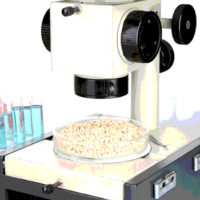What We Learned from the Traceability Pilots

According to the U.S. Centers for Disease Control and Prevention, leafy greens are the second most common source of foodborne Shiga toxin-producing Escherichia coli (STEC) O157 outbreaks. From 2009 to 2018, 40 STEC outbreaks in the United States and Canada were linked to leafy greens. The outbreaks translated to 1,212 illnesses, 77 cases of hemolytic uremic syndrome, and 8 deaths.
In a continued effort to curb leafy greens-related outbreaks, the U.S. Food and Drug Administration (FDA) developed the Leafy Greens STEC Action Plan in March 2020, detailing both gaps and opportunities to improve food safety throughout the supply chain. The plan, among several points, underscored the need to improve end-to-end traceability across the leafy greens supply chain, specifically by analyzing how the industry and FDA can rapidly trace a contaminated food to its source. Rapid tracebacks can help shorten outbreaks, narrow product warnings, and limit the sickening of consumers.
In response to FDA’s initiatives for improved traceability in the produce supply chain, the Institute of Food Technologists (IFT)’s Global Food Traceability Center, alongside the Food Marketing Institute, GS1 US, the International Foodservice Distributors Association, the Produce Marketing Association, and United Fresh Produce Association, collaborated with industry stakeholders, including growers, distributors, and both independent and chain retailers, to launch three traceability pilots.
The pilots, which took place from July through October 2020, tracked romaine lettuce through three separate supply chains, starting with consumer-made purchases using loyalty or credit cards. Teams of industry experts mimicked FDA’s role in conducting the traceback, including determining the data to be requested and how to format the requests for such data. Supply chain members, beginning with point-of-sale or point-of-service, utilized a standardized template—called the Produce Traceback Template—to provide key data elements that allowed an item to be traced back to its source. The expert groups conducting the traceback then analyzed the information provided by each supply chain node to determine next steps.
In addition to the data obtained via the template, business intelligence data, such as sales data, stock rotation, inventory controls, and delivery schedules, were also collected. These elements were critical in bracketing the scope of the traceback. Combined, the template data and the supply chain insights led to the successful identification of the purchased product lots for all three pilots.
Although the participants stated they would adopt the template in the future, the pilots revealed opportunities to refine the template and highlighted the need for a greater focus on education. You can learn more about the template here.
The findings from these pilots will better enable the leafy green industry to efficiently prepare for and respond to regulatory records requests with the goal of rapidly identifying the origin of the contaminated product and could help the FDA improve their outbreak process.
To learn more, please visit ift.org/leafygreens.
Bryan Hitchcock is IFT’s senior director of food chain and the executive director of the Global Food Traceability Center.
Looking for a reprint of this article?
From high-res PDFs to custom plaques, order your copy today!





